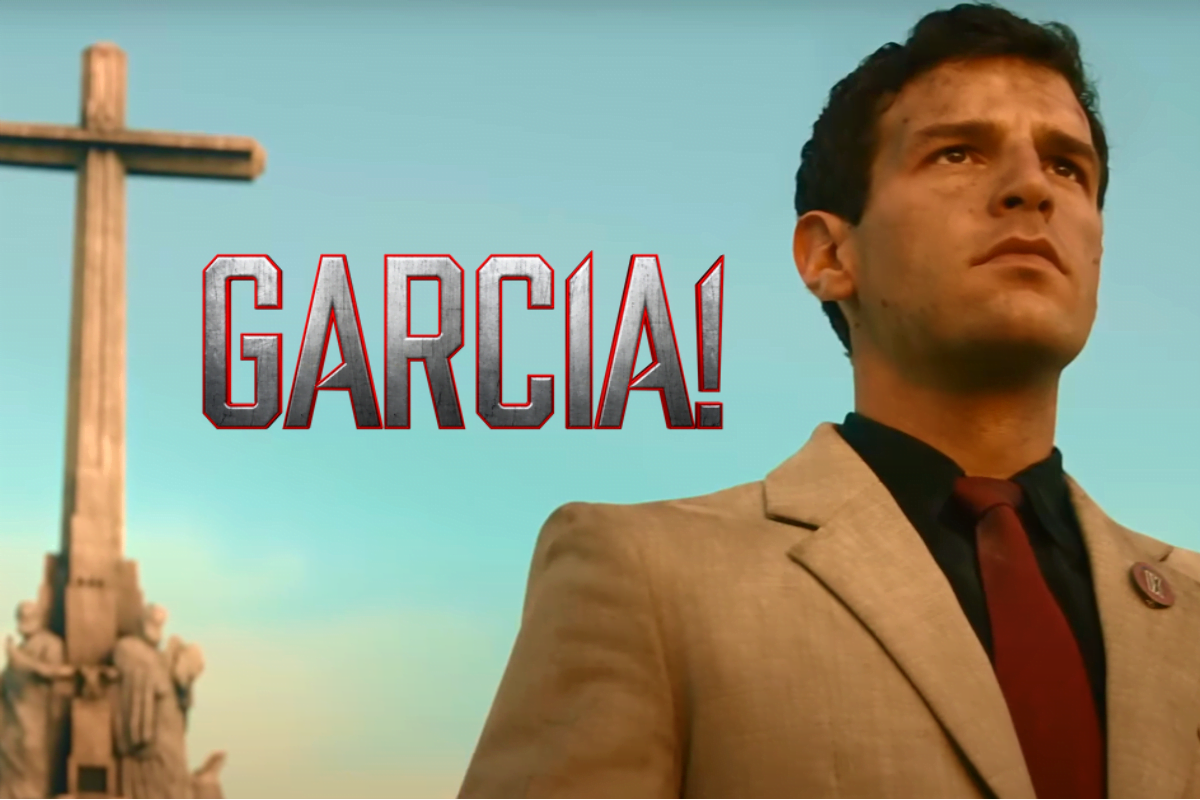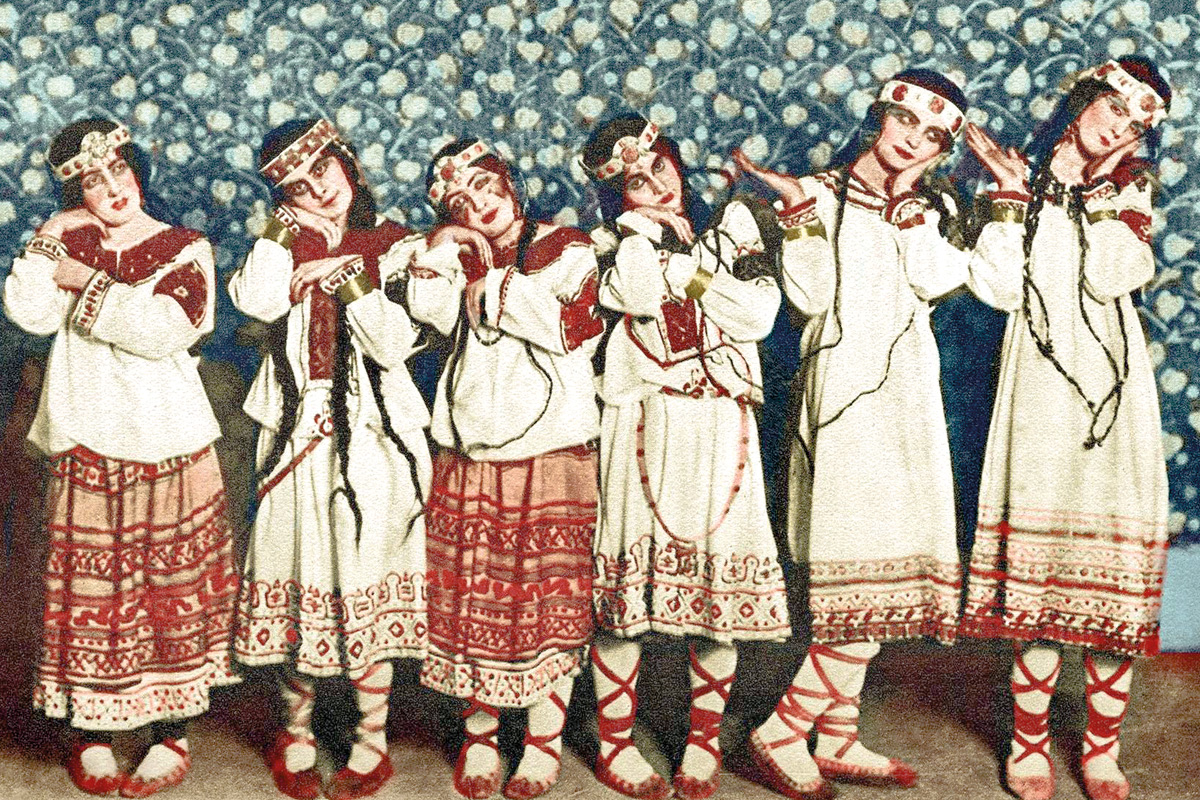¡García! is a 2022 HBO series adaptation of the 2015 graphic novel of the same name. It follows the awakening of García, a Francoist spy, into modern-day Spain after a 60-year cryogenic hibernation.
Through García’s journey, and frequent flashbacks to the past, the show brings into sharp relief the differences between the Franco dictatorship and today.
The series begins with a young journalist unearthing agent García in the dark recesses of the Valley of the Fallen. This is an appropriate starting point, given that the basilica was built on the bones of those who fought in the Spanish civil war. It was Franco’s resting place up until 2019, and still remains a notorious relic of the dictatorship.
The six-decade-long induced slumber of García, we are told, was directed by Franco in order to create his own superpowered secret service (known in the show as ‘Section IX’), inspired by Nazi pseudo-scientific experiments.
The plotline then unfolds in post-pandemic Spain, which is wracked by economic and political crises, and on the eve of presidential elections.
Generational divide?
 The show hinges on a divide between the younger generations – who are increasingly politically radicalised – and the older generations, who with rose-tinted glasses, look back favourably to the fascist regime.
The show hinges on a divide between the younger generations – who are increasingly politically radicalised – and the older generations, who with rose-tinted glasses, look back favourably to the fascist regime.
The show correctly contrasts the supposed time of ‘stability’ and patriotic ‘sacrifice for Spain’s sake’ that this older generation yearn for, with the reality of Franco’s regime, which ruled the country with an iron fist. Mention is made of the labour camps, torture, and murder of ‘rojos’ (communists) and republicans, for example.
This ‘generational divide’ in Spanish society is overly exaggerated, however. The elderly are portrayed as having blanket reactionary views, in contrast to the youth who are shown rallying behind a left-wing presidential candidate.
The show therefore blurs over the class divide that exists, which is the real basis for the division between the political left and right. For example, the relatively small support today for the right-wing VOX party comes mainly from the middle class, not ‘the elderly’.
What is forgotten is that it was the masses from this older generation that were involved in the revolutionary wave that swept Spain in the 1970s during the dying days of the dictatorship – and whose aspirations were cut across by the manoeuvres made at the top during the so-called ‘democratic transition’.
Fascism on the rise?

Perhaps unconsciously, the show makes the point that fascism arises off the back of a crisis of capitalism itself. In ¡García!, the stability of the traditional parties is shown as crumbling, as they are weakened by crime and corruption.
And so the fascist Section IX presents itself as the solution to the crisis of bourgeois democracy. These agents of the past whisper in the ears of the establishment like a cartoon devil sitting on their shoulders.
Sadly, this is to give credence to the liberal fear-mongering that ‘fascism is on the rise’ in Spain and much of the world.
This superficial and shallow analysis follows from the scarecrow of fascism that has been erected around reactionary figures such as Donald Trump in the US, and Marie Le Pen in France, in order to cow people into voting for the ‘lesser evil’ of the likes of Biden and Macron.
But fascism does not arise, nor do right-wing ideas generally take hold, from a small group of conspirators longing for ‘the good old days’.
Rather, fascism is the distilled essence of reaction, when the continuation of capitalism is incompatible with the organisations of the working class. It is a last resort of the bourgeoisie, drawing behind it a frenzied middle class.
In this regard, the show brings a typical misconception of fascism to the fore: that it is based simply on charismatic ‘bad guys’ conspiring amongst themselves. This simply plays into the hysteria surrounding the topic today.
Ghosts of the past
By the end, García begins to reject Section IX, as he becomes more acquainted with modern-day Spain and its values. Even the leader of Section IX prioritises his family over his plot to take over the Spanish establishment, as he is a ‘family man’ before he is a fascist.
But fascist and far-right ideas are not something that can be fought with a change of heart. In fact, these reactionary ideas are fuelled by the complete collapse of the capitalist ‘centre ground’, and the feeling that the system is not working in the interests of ordinary people.
Remarkably, the show does not revisit the period of the ‘democratic transition’ in the 1970s, which sowed the seeds for the conflict and chaos which now engulfs Spain.
From the Francoist 1978 constitution; to fascists simply assuming new roles under the auspices of a democratic regime; to the unsolved national questions bubbling over in Catalonia and other regions: modern day Spain remains haunted by the ghosts of the past.
But with no serious appraisal of the past, the show remains muddled in its political message from start to finish.
Struggle for socialism
The show’s director has claimed that ¡García! is an ode to liberalism; that in spite of all its flaws, bourgeois democracy is the best we can hope to achieve.
But throughout the show, we see that liberal democracy and faith in the system as the ‘voice of the people’ is sabotaged, not by the conspiratorial Section IX, but by the limits of capitalism itself.
The woolly premise that a ‘change of heart’ is all that is needed for everyone to realise how good they have it now is as fantastical as it is far-fetched. It will cut no ice for those afflicted by the crises in housing and healthcare, or the high level of youth unemployment.
The future of Spain is not in the hands of a genetically modified super-spy, but of the Spanish youth and working class. It is only through a socialist transformation of society – in Spain and internationally – that the lingering legacy of Francoism will be buried once and for all.






